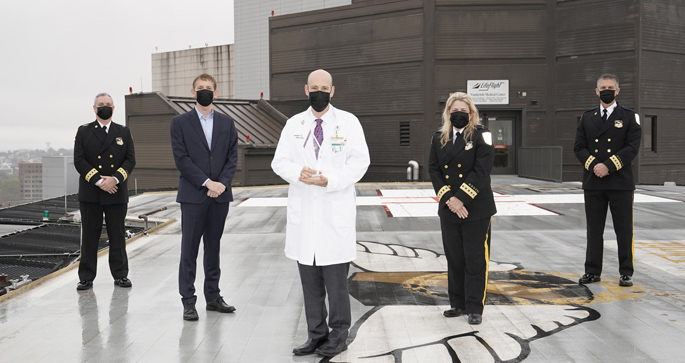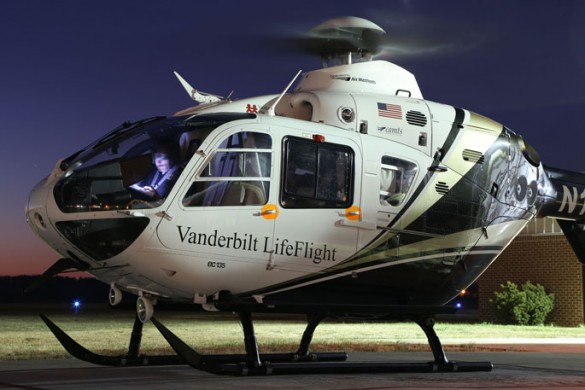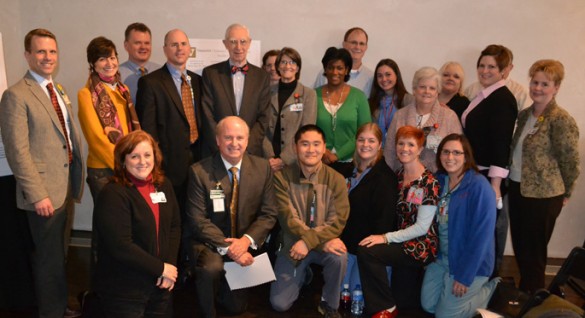As a jet throttles down the runway and swings aloft, its wheels folding up and away, the crew members aboard rely for their safety not only on sound engineering and technology, but on each other’s ability to spot problems and work together to resolve any arising safety issue.
In an effort to guard patient safety, Vanderbilt University Medical Center is taking a leaf from American aviation, where it’s been shown that human error and the harm it poses can be substantially reduced through training to improve communication among members of the flight crew.
Beginning this month, Vanderbilt will be one of the first medical centers in the country to implement so broadly the safety principles originally developed to prevent airplane crashes.
Across the hospital and clinic, every member of the patient care team will be trained.
According to a report from the Institute of Medicine, U.S. deaths caused by medical error exceed motor vehicle accident fatalities.
"When you enter a hospital in this country, your chances of being accidentally killed are of the same order of magnitude as the risk of death was among our armed services men and women who served in the previous war in Iraq," said Dr. Drew Gaffney, associate dean for clinical affairs.
As aviation technology improved during the mid 20th century, the human factor in crashes became more apparent, with crashes frequently traced to poor communication among pilots, crew and ground control. Decades of study led the military and airlines to develop training that helps make safety awareness and good communication a habit among flight crews. Variously known as cockpit resource management or crew resource management, the training is used in all military aviation units and was made mandatory for the airline industry.
As adapted at VUMC, the goal of the training will be elimination of morbidity and mortality associated with preventable medical error. Improved communication can help teams recognize adverse events at an earlier stage. The strategy is to prevent situations where staff notice mistakes or problems but somehow fail to communicate effectively to prevent harm to the patient.
A principle of the training is that the better that team members understand each other’s roles, the better they will communicate critical information and the better patient care decision-making will be.
"In examining potential medical liability claims identified by our staff and patients, we find that a majority of cases involve communication problems," Gaffney said.
Robin Steaban, administrative director of the cardiovascular patient care center, was among 30 VUMC clinical leaders who previewed the training earlier this summer.
"It’s often easy to overlook contributions from other members of the team, or fail to encourage their contributions, and to treat only those who share your role as the real team," Steaban said. "This training helps ensure that the whole team is heard."
Dr. John Morris, professor and chief of the division of trauma and surgical critical care, has also previewed the training.
"We have few vehicles for faculty, nursing staff, medical receptionists and care partners to get together and share common goals, or even review procedures, so that we all become focused on trying to do the right thing, to get away from our focus on the hierarchy and instead focus on patient outcomes," Morris said. "The approach set out in this training helps foster that needed cohesion."
"We may know intuitively that everyone should pull their weight," said Assistant Chief Medical Officer Dr. Rhea Seddon, "but there is value in spelling out just how it should happen."
Team leaders learn the value of each time affirming for the team the importance of communication. They learn the value of spelling out the goal for the patient and the indicators that the team will be monitoring. Leaders learn to solicit input from the members of their team, and they examine the value of post-procedure briefings.
Team members learn to keep an eye out, and, when they see a problem, to speak up in a helpful manner that facilitates problem solving and decision-making by the leader.
"In a hierarchy not all people feel comfortable coming forward," Morris said. As decision-makers, "We need to know bad news as well as good news, and we need to hold the bearer of bad news blameless."
"Ultimately," Gaffney said, "the training is a mechanism for creation and maintenance of a culture that is proactive and constantly assesses and reduces risks to patients going through our system."
Those at Vanderbilt with experience of the training as it’s used in aviation include Seddon, who as a former astronaut has flown three space shuttle missions, and Gaffney, a colonel in the Air Force Reserve who has also served aboard the shuttle.
Among flying units, higher job satisfaction has been among the indirect benefits of the training. Gaffney hopes this benefit will be realized at VUMC.
"If you feel you’re doing good work on a team and your input is heard and respected, it’s hard to get a much better job than that," he said. As Gaffney points out, as staff retention increases, expertise and quality are also apt to increase.
Training begins this month for 600 people, including among others those in the emergency department and in trauma.
The Memphis-based training vendor, Crew Training International, Inc., works in both aviation and health care, and has experience with groups in a handful of hospitals around the country. The company’s trainers first observe patient care processes in the participants’ area of the hospital or clinic. Training begins with a day-long session of lectures and group activity with patient care scenarios keyed to the participants’ clinical area. Trainers return a week later to observe work and reinforce the message. Gaffney said VUMC will eventually integrate the principles of crew resource management into all patient care training.
VUMC will survey participants about the value of the training and will test whether people see its relevance to their work. Ongoing analysis of adverse events will help establish whether the training improves communication and lowers error rates. VUMC will also measure the effect of the training on staff and faculty satisfaction.
Media contact: Paul Govern (615) 322-4747 paul.govern@Vanderbilt.Edu















